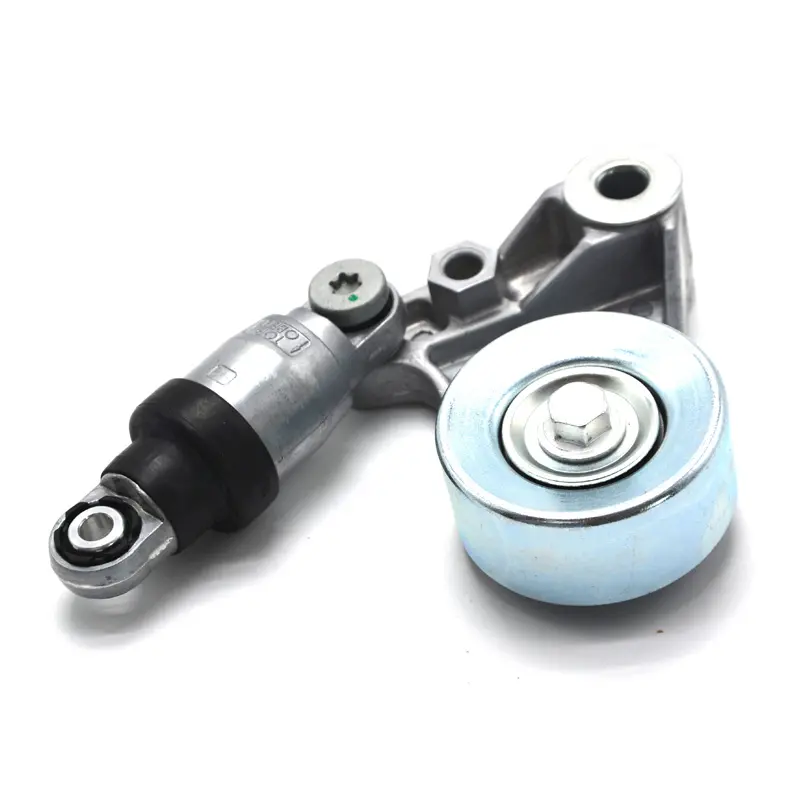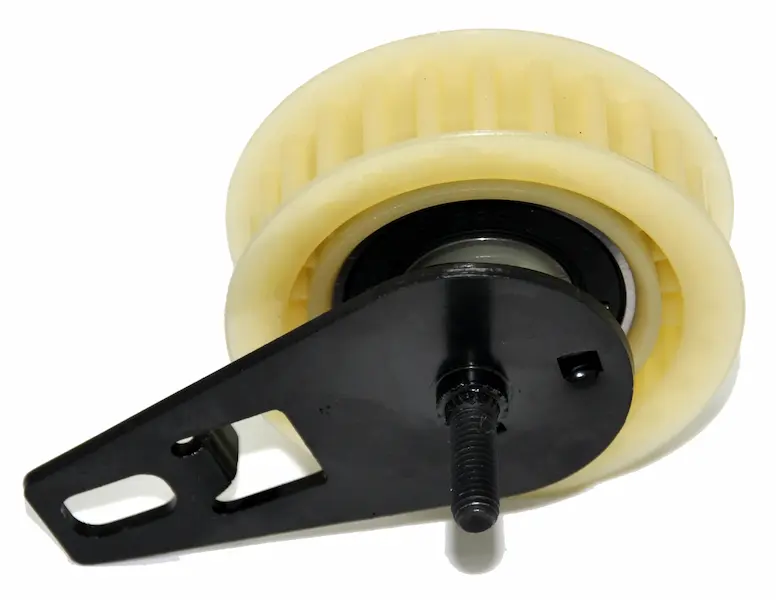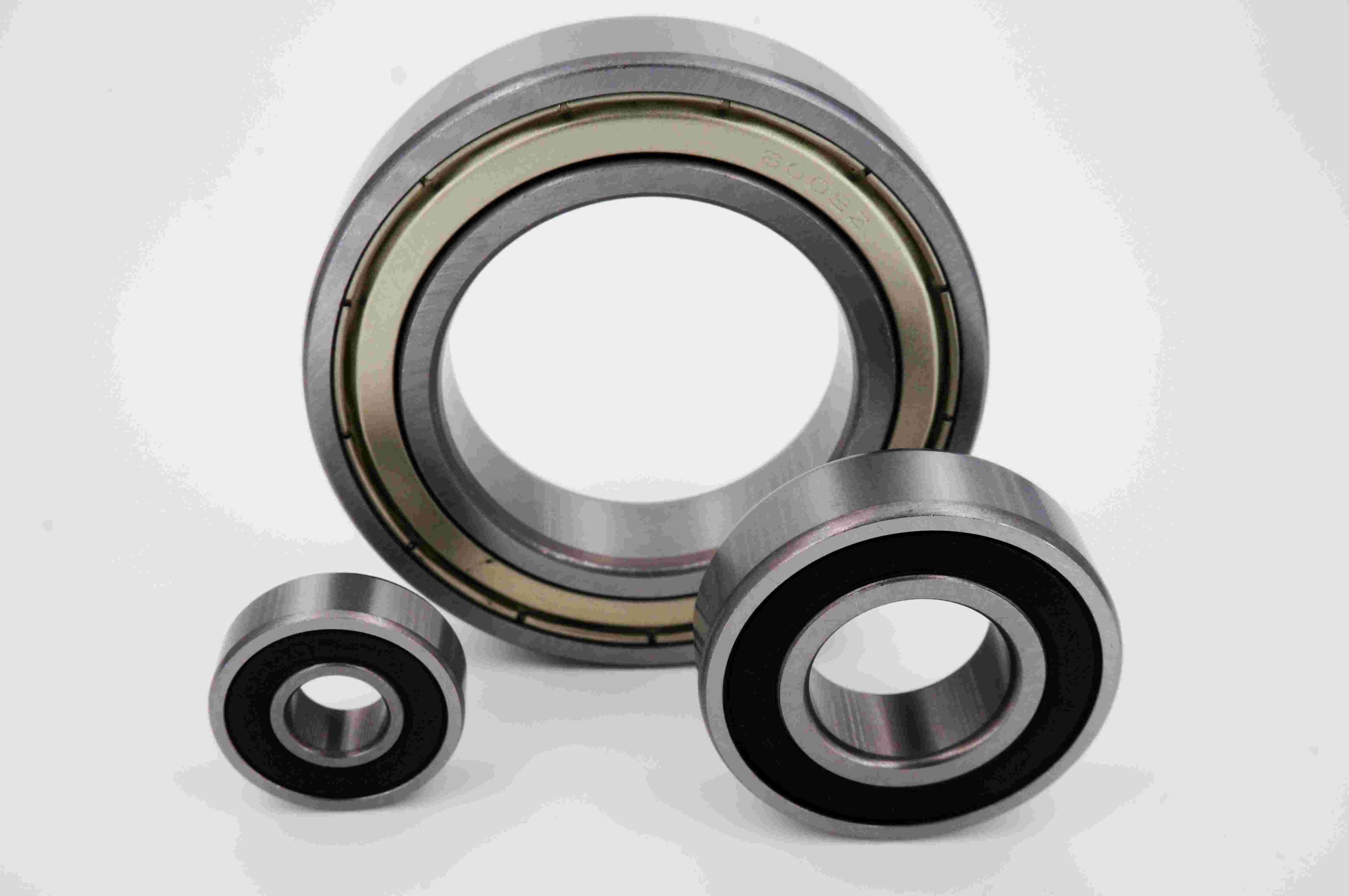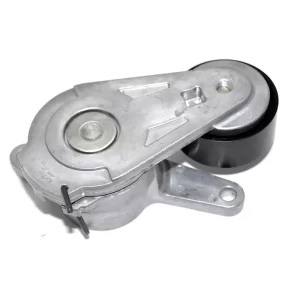산업 기계 및 자동차 분야에서는 시스템을 원활하게 작동시키는 부품을 간과하는 경우가 많습니다. 이러한 중요한 구성 요소 중 하나는 아이들러 텐셔너 풀리, 특히 헤비 듀티 버전입니다. 이 풀리는 벨트 구동 시스템이 효율적이고 안정적으로 작동하도록 하는 데 없어서는 안 될 역할을 하며, 이는 기계의 수명과 성능에 필수적입니다. 이 문서에서는 벨트 구동 시스템을 사용할 때 얻을 수 있는 5가지 이점을 살펴봅니다. 헤비 듀티 아이들러 텐셔너 풀리 그리고 장비의 성능을 향상시키고자 하는 모든 사람에게 필수적인 업그레이드로 간주되어야 하는 이유를 설명합니다.
1. 향상된 내구성 및 수명
헤비 듀티 아이들러 텐셔너 풀리 사용의 가장 중요한 장점 중 하나는 향상된 내구성과 수명입니다. 이 풀리는 산업 및 헤비 듀티 애플리케이션의 엄격한 요구 사항을 견딜 수 있도록 특별히 설계되었습니다. 지속적인 응력을 받으면 빠르게 마모될 수 있는 표준 풀리와 달리 헤비 듀티 풀리는 강화 강철 또는 고급 알루미늄 합금과 같은 고품질 소재로 제작되어 극한의 조건을 견딜 수 있습니다.
이 풀리의 우수한 구조는 더 가벼운 대체품에서 흔히 발생하는 뒤틀림, 균열 또는 조기 마모와 같은 문제가 덜 발생한다는 것을 의미합니다. 이러한 내구성은 풀리 자체의 수명이 길어져 교체 및 유지보수 빈도가 줄어들어 전반적인 소유 비용이 낮아집니다. 제조 또는 운송과 같이 연속 작동에 크게 의존하는 산업의 경우, 헤비 듀티 아이들러 텐셔너 풀리의 수명이 연장되면 상당한 비용 절감과 가동 중단 시간 감소 효과를 얻을 수 있습니다.
2. 향상된 벨트 장력 및 정렬
벨트 구동 시스템의 효율적인 작동을 위해서는 적절한 벨트 장력과 정렬을 유지하는 것이 중요합니다. 헤비 듀티 아이들러 텐셔너 풀리는 일관되고 정밀한 장력 제어를 제공하여 벨트의 미끄러짐, 정렬 불량 및 과도한 마모를 방지함으로써 이 분야에서 탁월한 성능을 발휘합니다. 이는 벨트가 무거운 하중과 지속적인 작동에 노출되는 고응력 환경에서 특히 중요합니다.
헤비 듀티 풀리가 제공하는 향상된 장력 제어 기능은 벨트가 팽팽하고 정렬된 상태를 유지하도록 하여 과열, 마모 또는 파손과 같은 벨트 관련 문제의 위험을 줄여줍니다. 또한 적절한 정렬은 베어링 및 샤프트와 같은 시스템의 다른 구성 요소에 가해지는 부담을 최소화하여 수명을 연장하고 기계적 고장 가능성을 줄일 수 있습니다.
많은 경우 헤비 듀티 아이들러 텐셔너 풀리를 사용하면 에너지 효율도 개선할 수 있습니다. 최적의 벨트 장력과 정렬을 유지하면 시스템 작동에 필요한 에너지가 줄어들어 전력 소비를 줄이고 운영 비용을 절감할 수 있습니다. 이러한 이점은 에너지 효율이 중요한 대규모 산업 운영에서 특히 유용합니다.
3. 부하 용량 증가
헤비 듀티 아이들러 텐셔너 풀리의 또 다른 중요한 이점은 부하 용량이 증가한다는 것입니다. 많은 응용 분야에서 표준 풀리는 중장비와 관련된 높은 하중을 처리하는 데 어려움을 겪을 수 있으며, 이로 인해 마모가 증가하고 고장 가능성이 높아집니다. 반면 헤비 듀티 풀리는 성능 저하 없이 훨씬 더 높은 하중을 수용하도록 설계되었습니다.
이 풀리는 하중 용량이 증가하여 건설 장비, 농기계 및 대규모 제조와 같이 하중이 무겁거나 변동이 심한 작업에서 사용하기에 이상적입니다. 더 큰 하중을 처리할 수 있는 풀리를 사용하면 가장 까다로운 조건에서도 장비가 안정적으로 작동할 수 있습니다.
헤비 듀티 아이들러 텐셔너 풀리는 더 높은 하중을 처리할 뿐만 아니라 하중 하에서 더 원활한 작동에 기여합니다. 견고한 구조와 정밀한 엔지니어링 덕분에 시스템 전체에 부하를 더 고르게 분산시켜 부품 고장으로 이어질 수 있는 응력 집중의 위험을 줄일 수 있습니다. 이는 시스템의 신뢰성을 향상시킬 뿐만 아니라 많은 비용이 드는 고장 및 수리를 방지하는 데에도 도움이 됩니다.
4. 유지보수 요구 사항 감소
유지보수는 모든 기계 시스템을 정상 작동 상태로 유지하는 데 필수적인 요소이지만 과도한 유지보수는 가동 중단 시간을 늘리고 운영 비용을 증가시킬 수 있습니다. 헤비 듀티 아이들러 텐셔너 풀리는 뛰어난 내구성과 성능 특성 덕분에 잦은 유지보수의 필요성을 최소화하도록 설계되었습니다.
이러한 풀리가 유지보수 요구 사항을 줄이는 방법 중 하나는 벨트와 시스템의 다른 구성품의 마모를 최소화하는 것입니다. 앞서 언급했듯이 헤비 듀티 풀리가 제공하는 향상된 장력과 정렬은 벨트 마모를 줄이는 데 도움이 되므로 벨트를 교체해야 하는 빈도가 줄어듭니다. 또한 헤비 듀티 풀리의 견고한 구조는 벨트 구동 시스템의 가동 중단의 일반적인 원인인 베어링 고장이나 풀리 정렬 불량과 같은 문제가 발생할 가능성이 적다는 것을 의미합니다.
또한 많은 헤비 듀티 아이들러 텐셔너 풀리는 유지보수를 염두에 두고 설계되어 정기적인 윤활 및 점검의 필요성을 줄여주는 밀봉 베어링 또는 자체 윤활 부품을 갖추고 있습니다. 이러한 설계 고려 사항은 풀리 유지보수에 필요한 시간과 노력을 줄여줄 뿐만 아니라 유지보수 간격 사이에 시스템이 안정적으로 작동하도록 하는 데 도움이 됩니다.
헤비 듀티 아이들러 텐셔너 풀리는 잦은 유지보수의 필요성과 관련 가동 중단 시간을 줄임으로써 전체 시스템 가용성과 생산성 향상에 기여할 수 있으며, 이는 가동 중단으로 인해 상당한 재정적 손실이 발생할 수 있는 산업에서 특히 중요합니다.
5. 다용도성 및 적응성
헤비 듀티 아이들러 텐셔너 풀리는 매우 다재다능하고 적응력이 뛰어나 다양한 산업 분야의 광범위한 응용 분야에 적합합니다. 자동차 시스템, 산업 기계, 농업 장비 등 어떤 분야에서 작업하든 헤비 듀티 풀리는 애플리케이션의 특정 요구 사항을 충족하도록 맞춤 제작할 수 있습니다.
이러한 풀리는 다양한 크기, 재질 및 구성으로 제공되므로 다양한 시스템의 고유한 요구사항에 맞게 조정할 수 있습니다. 예를 들어, 일부 고강도 풀리는 진동 감쇠 또는 내식성과 같은 추가 기능을 갖추고 있어 표준 풀리가 고장날 수 있는 열악한 환경에서 사용하기에 적합하도록 설계되었습니다.
헤비 듀티 아이들러 텐셔너 풀리의 적응성은 V벨트, 사문석 벨트, 타이밍 벨트 등 다양한 유형의 벨트와의 호환성까지 확장됩니다. 이러한 다용도성 덕분에 특정 벨트 유형이나 용도에 관계없이 거의 모든 벨트 구동 시스템에서 헤비 듀티 풀리를 사용할 수 있습니다.
헤비 듀티 풀리는 물리적 적응성 외에도 설치 및 조정의 용이성을 염두에 두고 설계되는 경우가 많습니다. 많은 모델이 조절 가능한 장력 조절 메커니즘 또는 퀵 릴리스 디자인을 갖추고 있어 빠르고 간단하게 설치할 수 있어 풀리를 시스템에 통합하는 데 필요한 시간과 노력을 줄여줍니다.
이러한 다목적성과 적응성으로 인해 헤비 듀티 아이들러 텐셔너 풀리는 다양한 응용 분야에 탁월한 선택이며, 특정 요구 사항을 충족하는 동시에 헤비 듀티 구조에 따른 내구성 및 성능 이점을 제공하는 풀리를 찾을 수 있습니다.
결론
요약하면, 헤비 듀티 아이들러 텐셔너 풀리 사용의 이점은 분명합니다. 이 풀리는 향상된 내구성과 수명, 향상된 벨트 장력 및 정렬, 부하 용량 증가, 유지보수 요구 사항 감소, 탁월한 다용도성 및 적응성을 제공합니다. 벨트 구동 시스템의 성능과 안정성을 최적화하고자 하는 모든 고객에게 헤비 듀티 아이들러 텐셔너 풀리로 업그레이드하는 것은 장기적으로 상당한 이점을 얻을 수 있는 현명한 투자입니다.
산업 환경에서 중장비를 운영하든 차량을 유지 관리하든, 헤비 듀티 풀리의 장점은 효율성 향상, 가동 중단 시간 감소, 전체 비용 절감으로 이어질 수 있습니다. 헤비 듀티 아이들러 텐셔너 풀리를 선택하면 단순히 부품에 투자하는 것이 아니라 전체 시스템의 장기적인 성공과 신뢰성에 투자하는 것입니다.




